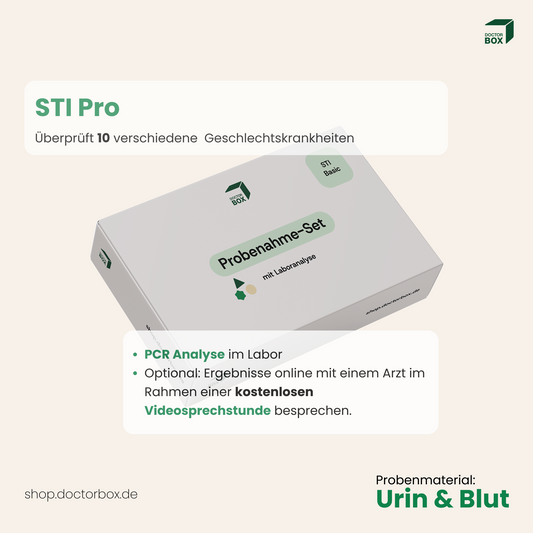Recognize dyslipidemia and act in time
Miriam WeihermüllerA lipid metabolism disorder – also referred to as a lipid metabolism disorder in medical jargon – includes disorders of fat transport and fat processing. In such a case, the values of the fats contained in the blood are above the defined normal range. A lipid metabolism disorder is an important risk factor for the development of cardiovascular and vascular diseases. On the one hand, lipid metabolism disorders can be genetically determined, but lack of exercise and an unhealthy lifestyle can also lead to lipid metabolism disorders. Read everything you need to know about the topic here.
What is a lipid metabolism disorder?
If the concentration of fats in the blood, the so-called lipids, is too high, this is referred to as a lipid metabolism disorder.
Doctors also refer to this as hyperlipoproteinemia, hypertriglyceridemia, dyslipidemia or hypercholesterolemia. A person's triglyceride and cholesterol levels therefore provide a first indication of a possible lipid metabolism disorder.
- When the cholesterol level in the body is high, it is called hypercholesterolemia.
- If the triglyceride level is elevated, doctors speak of hypertriglyceridemia.
- If both the triglyceride and cholesterol levels in the blood are elevated, then there is combined hyperlipidemia.
A lipid metabolism disorder can lead to further secondary diseases. For example, high blood fat levels can lead to plaques, i.e. deposits on the edges of blood vessels. These deposits constrict the vessels and, in the worst case, can also block them. A high-fat diet is not the trigger in all cases.
A lipid metabolism disorder (lipid metabolism disorder) is very insidious, because the increased blood lipid levels can lead to a drastic reduction in life expectancy, although no symptoms are noticeable for a long time. Around half of those affected do not even know they have the disease. This is often only recognized when it is already well advanced and long-term health effects such as a heart attack or stroke occur.
What are the causes behind a lipid metabolism disorder?
There are fats that we absorb through daily meals and fats that are produced in the body: both serve as a source of energy for the human body. Both the body's own fats and those ingested with food are transported through the bloodstream. The fats finally reach the other organs of the body via the distribution organs of the intestines and liver. However, fats are not water-soluble and therefore the lipids have to bind to proteins in order to be able to be transported in the blood at all. Easily water-soluble transporters, so-called lipoproteins, are formed. However, if there are too many lipoproteins, they penetrate the arterial walls and can continue to enlarge the deposits.
The water-soluble lipoproteins that transport cholesterol in the body can be divided into three groups:
-
LDL cholesterol – low-density lipoprotein
This is a so-called "low-density fat protein". This form of lipoprotein contains cholesterol, which is passed to the body's cells. If there is an excess of LDL cholesterol in the blood, deposits (plaques) form on the walls of the arteries, i.e. on the vessels that lead away from the heart. This process is also known as arteriosclerosis (hardening of the arteries). LDL cholesterol is therefore colloquially referred to as “bad cholesterol”.
-
HDL cholesterol – high-density lipoprotein
HDL cholesterol is a “very dense fatty protein”.
This lipoprotein is the antagonist of LDL cholesterol and is considered “good cholesterol”. Its main task is to absorb excess cholesterol from the body's cells and organs and to transport it back to the liver, where it can then be disposed of. This process is intended to prevent arterial calcification.
-
VLDL Cholesterol – Very Low Density Lipoprotein
This fat protein is very little dense. The lipoprotein transports cholesterol and triglycerides from the liver to body tissues. During this transport process, triglycerides are released and in this way LDL cholesterol is formed from the VLDL lipoprotein.
A blood analysis determines the HDL and LDL levels in the blood. In addition, physicians can also determine total cholesterol and triglyceride values. In the case of a lipid metabolism disorder, these values are outside the normal range for a longer period of time:
LDL cholesterol < 160 mg/dl
HDL cholesterol 45-65 mg/dl (women)
40-55 mg/dl (men)
Total cholesterol < 200 mg/dl
Triglycerides < 150 mg/dl
What forms of dyslipidemia are there?
In medicine, a distinction is made between two forms of lipid metabolism disorders:
Primary dyslipidemia
This form is genetic. However, the outbreak and the intensity of its development can be influenced by a healthy lifestyle. Individual living conditions such as lack of exercise, a one-sided, unhealthy diet or alcohol consumption can therefore increase the severity or the onset of the inherited disease.
Secondary dyslipidemia
If a lipid metabolism disorder is diagnosed, a secondary cause must be medically ruled out. These include diseases such as kidney or liver diseases, but also diabetes mellitus (diabetes) or an underactive thyroid gland (hypothyroidism).
There are also other risk factors that can trigger or exacerbate a lipid metabolism disorder:
- Drugs such as beta blockers for heart disease, estrogens such as the birth control pill, cortisone (glucocorticoids) or water-repellent drugs (diuretics).
- lack of exercise
- Diet high in fat, sugar and cholesterol
- overweight and obesity
- Metabolic syndrome (complex of symptoms or the combination of high blood pressure, obesity, sugar and lipid metabolism disorders)
- alcohol overconsumption
One of the causes mentioned can be influenced: An adapted lifestyle is therefore very advisable. If medication is the cause of a secondary lipid metabolism disorder, the medication or the dose may have to be corrected.
What are the symptoms of a lipid metabolism disorder?
If a lipid metabolism disorder is genetic, characteristic orange-yellowish nodules will appear on various parts of the body such as the chest, arms, buttocks, elbows, knees, ears and eyes over the course of the disease. The surface changes can also occur in the spaces between the fingers or in internal body organs such as the spleen or liver. If these nodules appear, those affected usually consult a doctor. As a result, the medical experts can determine the cause.
However, if you cannot perceive any symptoms, you see no reason to see a doctor. Only in the case of massive consequential damage to health can those affected be examined by a doctor. In some patients, a lipid metabolism disorder is only diagnosed as part of cardiovascular disease treatment.
A long-standing, severe lipid metabolism disorder can manifest itself through the following symptoms:
- Whitish-yellow cloudy ring around the cornea
- pain in the upper abdomen (due to inflammation of the liver or pancreas)
- Chest pain (angina pectoris) or pain in the legs due to peripheral arterial disease (PAOD) as a result of hardening of the arteries.
- stroke
Lipid metabolism disorder: prevention, early detection, treatment
The specific treatment of a lipid metabolism disorder depends on various factors. On the one hand, the individual situation of the person concerned must be taken into account. The causes of the lipid metabolism disorder must also be considered.
Basically, however, every lipid metabolism disorder therapy is based on the same basic building blocks:
-
Healthy and balanced diet
High-fat foods and saturated fats should be avoided. On the other hand, polyunsaturated fats and valuable vegetable oils are on the diet. Anyone who suffers from excessive body weight should reduce it through an appropriate diet.
-
Adapted lifestyle
A change in daily habits is required for the successful treatment of a lipid metabolism disorder. This also includes a consistent renunciation of nicotine and alcohol. A healthy lifestyle also includes avoiding stress.
-
Movement
People who suffer from a lipid metabolism disorder should bring more exercise into their everyday lives. Ideally, you should take a walk in the fresh air every day. Sport, yoga, but also autogenic training or progressive muscle relaxation are also ideal ways to reduce stress.
At the same time, an attempt is made during treatment to minimize the accompanying risk factors: For example, existing diabetes must be properly controlled. Blood pressure that is too high also needs to be regulated again.
If all of the therapy measures mentioned do not lead to the desired results, doctors can also use certain medications to lower the elevated triglyceride and cholesterol levels.
Fat metabolism analysis for the home
The health consequences of a dyslipidemia often only become apparent at a late stage, but can be very serious. Many of those affected only react when vascular damage has already occurred. For this reason, it is important to identify and treat a lipid metabolism disorder as early as possible. With DoctorBox's lipid metabolism home test, you can determine important values and act if necessary. The analysis works on a dried blood basis and the results are evaluated by an accredited medical laboratory. Your individual test results will be available in a few days.
Buy the lipid metabolism test now!
Sources
https://www.medicoconsult.de/fettstoffwechselstoerung/
https://medlexi.de/Fettstoffwechselst%C3%B6rung
photo credit
© lightsource – Depositphotos – ID# 502235084




